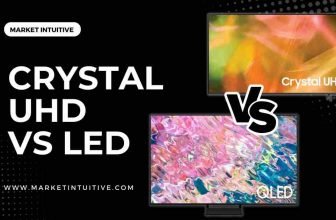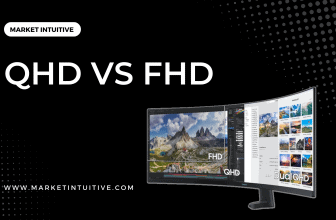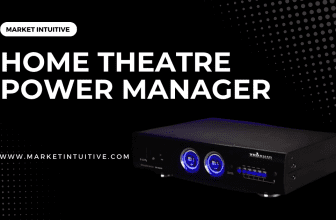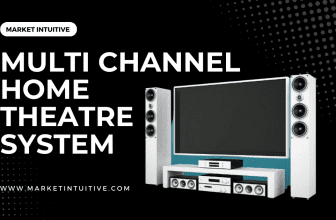Nanocell vs UHD: Which One Is A Better TV?
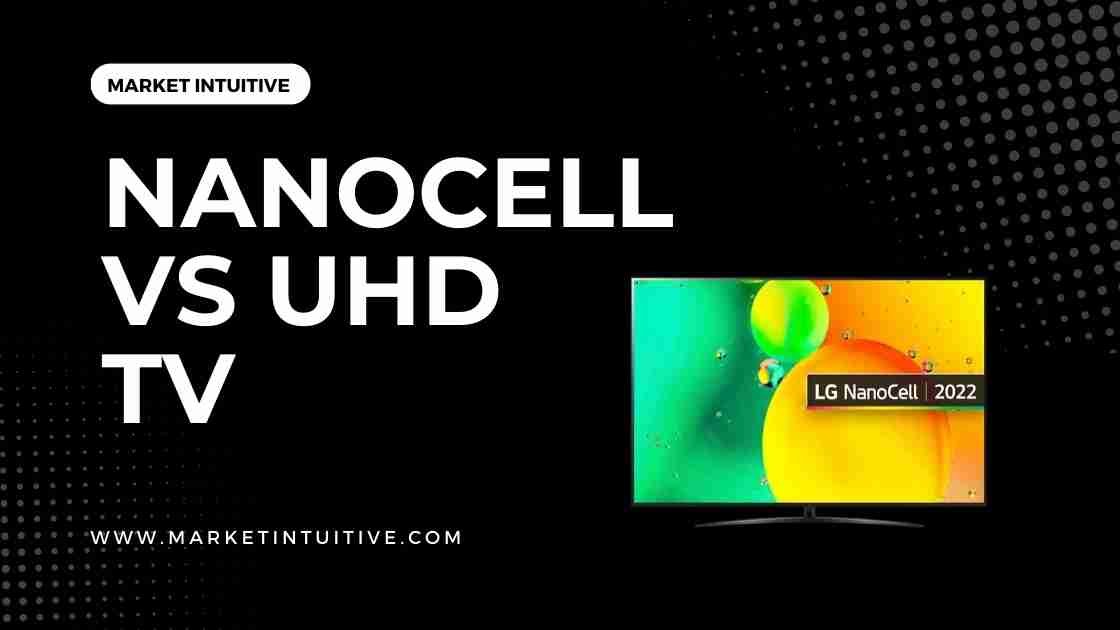
Today, I am here with a complete guide on Nanocell vs UHD. Many individuals are excited about Nanocell vs UHD television technology because they continuously improve rapidly.
However, how to know which one is better? What’s the process of selection? Before I confirm which is better, Nanocell or UHD, you must first know about both.
LG is the sole manufacturer of NanoCell televisions since NanoCell is an LG-created proprietary technology. The NanoCell filter is layered over the TV screen panel to remove particles down to a size of around one nanometer.
The motive of Nanocell is to remove unwanted wavelengths of light. Thus, providing better color depth and richness.
On the other hand, UHD is based on a screen format. It is just a resolution and aspect ratio standard.
All UHD TVs have a 4K (3840 x 2160p) resolution and an aspect ratio of 16:9. An LG TV can be both NanoCell and UHD simultaneously since UHD is merely a screen format.
Is buying a NanoCell UHD television worth the price or is it better to purchase a different type of UHD television? That is the real question here.
UHD screens can be paired with various screen panel technologies, including OLED and LED screens. NanoCell uses only IPS LCD panels.
Nanocell vs UHD: A Side-by-Side Comparison
DISPLAY TECHNOLOGY | NANOCELL | UHD |
Screen Thickness | 35.56 mm | 3.85 mm |
Contrast | Relatively low | Infinite |
Viewing Angle | ~30 degrees | ~60 degrees |
Burn-In | No risk | High risk |
Display Type | LED-LCD | UHD |
Dimming | Grayish & bleeding | Perfect blacks |
Response Time | 10 ms | 1.7 ms |
Color Accuracy | Excellent | Excellent |
Price | Mid–high | High |
Nanocell vs UHD: What’s the Difference?
Let’s now look at the difference between Nanocell vs UHD.
NanoCell
Nanocell offers a filter technology that gives your TV an incredible color depth and reproduction.
LG’s NanoCell TVs have much to offer, thanks to their IPS LCD panels. This kind of panel is renowned for its excellent visuals.
NanoCell TVs have a wide color gamut. A color gamut determines how many distinct colors it can display—the broader the color gamut, the more colors your TV offers.
The extra-wide viewing angles of IPS screens are well known. Thanks to a viewing angle range of 178/178+. Sitting to the side of the screen won’t affect your viewing experience.
Sitting at a table or desk while using this feature is excellent for multitasking. It’s even better for viewing parties. NanoCell televisions have lower response times and refresh rates than other panel technologies.
NanoCell TVs are more affordable than OLED TVs, the most popular type, due to their extensive range of features and excellent performance. But, many UHD televisions cost less than NanoCell. LG’s NanoCell TVs cost around $700 to $2,500.
UHD
UHD is simply a higher resolution screen format than QHD (quad high definition), FHD (full high definition), and HD (regular high definition).
LG comes with different UHD TVs on its site. Every last NanoCell TV is found in the UHD catalog, as they all use a 4k resolution.
OLED TVs are the most prominent form of UHD televisions. An OLED screen provides beautiful color rendering and a wide color gamut.
The contrast ratio is an essential feature of OLEDs. The TV’s contrast ratio is the difference between how bright whites can appear and how dark blacks can appear. Some televisions misrepresent black as dark gray, which diminishes the impact of certain scenes.
The contrast ratio greatly impacts the richness of color and pictures in a dark environment, such as at home, or on movie night with the lights off. However, it matters a lot regardless of the environment.
NanoCell technology has a significantly lower contrast ratio than OLED TVs.
Nanocell vs UHD: Pros and Cons
Here are the pros and cons of Nanocell –
Here are the pros and cons of UHD –
Nanocell vs UHD: Facts
- NanoCell filters out undesirable light particles to create cleaner, more abundant colors.
- IPS panels are used in all NanoCell TVs, providing wide viewing angles and superb color reproduction.
- The specification for UHD is resolution (3840 x 2160p) and aspect ratio (16:9).
- All NanoCell TVs are UHD since they utilize a 4k resolution.
- Nanocell is more affordable than OLED. However, it doesn’t have a good contrast ratio.
NanoCell TV vs UHD: Is the Extra Cost Worth It?
When you are thinking of buying a new TV, there are many things to keep in mind. For instance, if you are a movie lover and want to watch your films in a dark room at night, an IPS screen might not be the best choice.
If you’re a game lover, go for a TV screen with a high refresh rate and fast response time. This ignores low input lag and will help you in playing fast-paced games.
You need to consider the budget if you are buying a TV. Make sure that you receive a good quality TV without spending more.
On comparing Nanocell vs UHD, you will find out that Nanocell TV is more costly than UHD. Remember to check the additional features if you are paying extra money.
Nanocell vs UHD: Which Should You Get
Nanocell vs UHD, which one you should get entirely depends on your viewing experience & your budget.
There are different types of UHD televisions. If you want to save money, avoid the NanoCell TV option. Instead, you can get a cheap UHD television with unique features.
There’s no reason to end the streak if you’ve always enjoyed IPS panels in your computer monitors, televisions, and other displays. NanoCell technology preserves every benefit of IPS televisions while reducing some downsides.
Premium NanoCell TVs use IPS technology to deliver high-quality pictures. As the cost of the TV increases, so will the quality of the IPS panels. Unless you are a professional console gamer, you may not notice some of the IPS panels’ deficiencies, such as refresh rates and response times.
Although NanoCell IPS TVs can match OLED in terms of color reproduction, gamut, and richness, they will not be able to match OLED in contrast ratios.
So, opt for an OLED UHD TV if the contrast ratio is your primary goal.
It’s excellent that both Nanocell vs UHD deserve praise and are worth the purchase.
Nanocell vs UHD: FAQs (Frequently Asked Questions)
1. Is NanoCell better than UHD?
NanoCell is a kind of UHD television with a 4k resolution. NanoCell TVs provide a premium viewing experience that is better than most UHD televisions. The only exception is OLED, which does everything NanoCell does but has a better contrast ratio.
2. What’s the difference between LG UHD and Nano?
The LG NANO85 is better than the LG UM7300. The NANO85 2020 has improved viewing angles, better out-of-the-box color accuracy, the ability to remove judder from any source, and it displays a wide color gamut for HDR content.
3. Is LG NanoCell better?
OLED stands better than LG NanoCell TVs. OLED offers better image quality, gaming performance, low power consumption, deep blacks, bright whites, and amazing color. The NanoCell, however, is good for use in bright rooms and doesn’t come with the risk of burn-in that OLED has.
4. What is better Qled or NanoCell?
The wide viewing angle ensures the best picture quality and clarity when viewed from the side. NanoCell technology outperforms QLED technology in this aspect, as it maintains color from wider angles.
5. Which is better 4K or UHD?
UHD signifies 3840×2160, and 4K represents the exact resolution in the display market. However, 4K means 4096×2160, or 256 pixels wider than UHD in the digital cinema market.
6. Is Nano better than OLED?
Nano TVs offer excellent image quality and are quite more affordable than OLED. In comparison, OLED provides a superior image with the deepest blacks and depth of the color output.
7. Which is better QLED or OLED or NanoCell?
QLED TVs are brighter and have more accurate colors than LED and OLED TVs, but they don’t deliver the deep black and contrast levels that OLED TVs do. The creation of QLED TVs is expensive, so brands feel that starting with a 43-inch screen is economically viable.
8. What is 4K NanoCell?
According to LG, NanoCell is a filtering layer that sits over the TV’s LCD panel and improves picture quality by enhancing color depth. The technology is new, and the costs are incredibly varied.
9. Which is better OLED or UHD?
Compared to 4k UHD LED TVs, OLEDs have a much wider and more impressive viewing angle. Due to the self-illuminating pixels in OLED screens, shutter issues are still present in LED TVs. Because of this fact, OLED is the apparent winner in this category.
10. Is LG Nano Cell TV 4K?
NanoCell TV offers real 4K that fulfills the CM international standard value. Realizing a more luminous and sharp visual experience with NanoCell Technology makes Real 4K resolution so unique.
11. What is UHD in a TV?
UHD means Ultra High Definition and is the successor to Full HD. UHD has a resolution of 3840 x 2160 pixels (8,294,400 pixels overall), which is four times higher than its predecessor’s.
12. What is crystal UHD?
Crystal UHDs use unique backlighting technology to boost contrast and color accuracy. In addition to using a special LCD panel that is more efficient at the light, Crystal UHD TVs are also more effective at displaying pictures.
13. Which is better, NanoCell or UHD TV?
NanoCell televisions provide a superior viewing experience to other UHD TVs.Thanks to their 4k resolution. NanoCell performs the same functions as an OLED TV but has a better contrast ratio.
14. What’s the difference between LG UHD and Nano?
A NanoCell TV uses UHD, a screen format with a 16:9 aspect ratio and 4k resolution. Every NanoCell TV uses UHD, but not every UHD TV is a NanoCell TV. LG produces UHD TVs in various forms, including OLED, NanoCell, and others.
15. Is it worth getting a NanoCell TV?
NanoCell TV is well worth the money. IPS panels provide good color rendition and a wide viewing angle, but the NanoCell technology used in them makes the colors even more spectacular.
Related Topics:
- Crystal UHD vs LED: Which One Is Best For You?
- UHD VS. HD: Which Is Better?
- IPS vs LED Monitor: Which One is Best For You?
Summary
The NanoCell TV is an excellent choice if you want to purchase a TV for your family. It comes with IPS panels that make it great for watching movies or TV shows in a well-lit environment.
The IPS panels provide excellent image quality and a high refresh rate for enjoying games or fast-paced content. You’ll be able to enjoy lifelike and high-quality images because of their color accuracy.
I hope now you understand which is better among Nanocell vs UHD.



